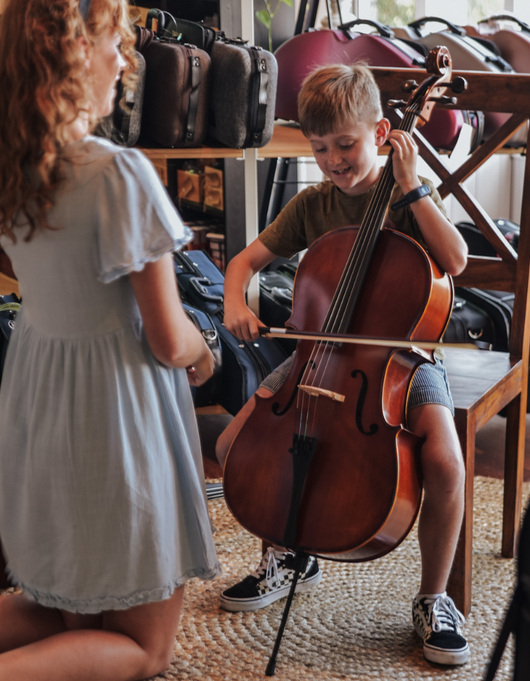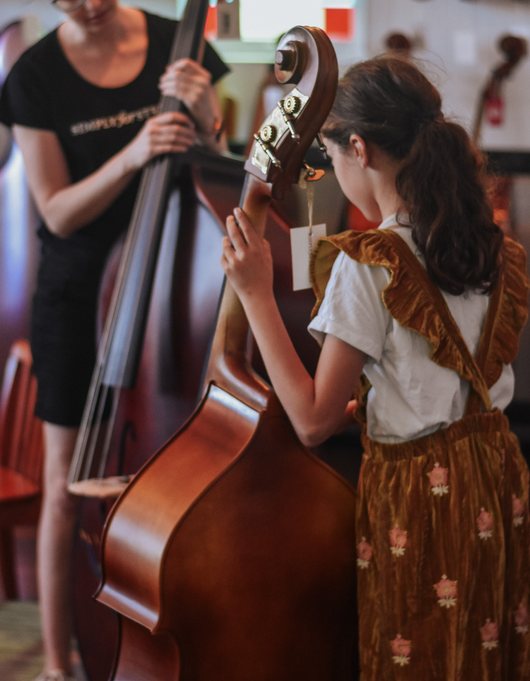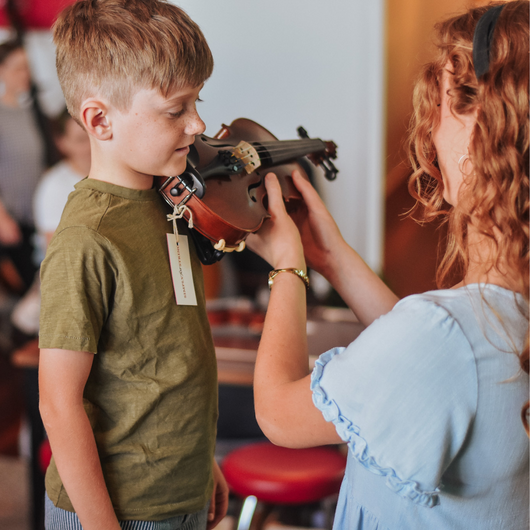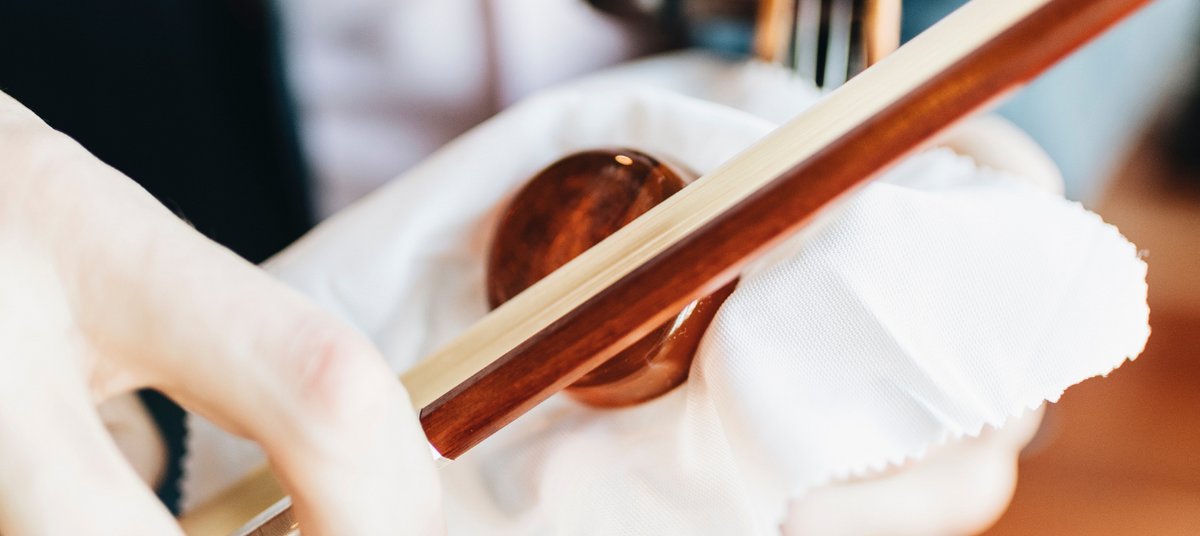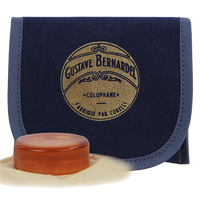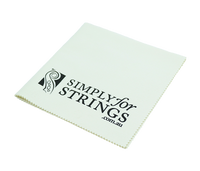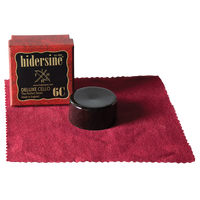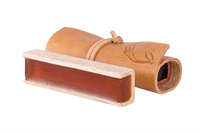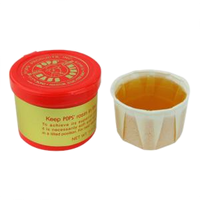How do I apply and use rosin?
It’s important to ensure you don’t put too much or too little rosin on your bow. To make sure you get the right amount, first tighten your bow and press down the bow hair onto the rosin. The movement you need to use is straight up and down.
Here are some quick and easy steps to follow on how to use rosin on your bow:
- Take your tightened bow and start putting rosin on the bow hair.
Use long, smooth strokes across the entire length of the bow and avoid it building up in any one area. Dedicate a few seconds to inspect each area of the bow and apply the rosin evenly by going up and down the bow.
- Test to see how much rosin is on the bow
Test the instrument and check the body for dust. If there’s dust on the body of the instrument, you have too much rosin on your bow.
- When there’s enough rosin on the bow, it’s recommended that you reapply it every couple of practice sessions.
If you use the same area on the rosin block, a groove will be created. When applying the rosin to the bow hairs it’s important to use a different part of the block every time you apply it so that you don’t end up creating a groove.
What is rosin?
Rosin is a solid form of tree resin that’s obtained from pines and other conifers. It’s semi-transparent and varies in colour from yellow to black. It’s used by musicians and luthiers to improve the sound quality of a stringed instrument.
Rosin creates friction between the bow hair and the strings, as well as helping the bow grip the strings to produce the sound. If you don’t use rosin on the bow, your instrument will have an airy sound when you play.
At Simply for Strings we have a selection of great rosin for maintaining your strings.
Why is rosin used?
The main reason for using rosin is to help maintain your strings and to improve the sound quality coming out of your instrument. Bow hair on its own doesn’t create the friction needed to produce sound. If you use rosin it creates enough friction to cause the string to vibrate. The rosin causes bow hair to stick to the string and pull it, which activates the string.
Read more on ‘Brands to Try When Buying an Advanced Bow for String Instruments’.
When do I need to use rosin?
When you need to use rosin will depend on how much you’re using your instrument. To determine when you need to use rosin, first you’ll need to check how much rosin is on your bow. To do this, take a dry cloth and swipe the bow hair toward the frog area. If there’s no rosin on the cloth, you’ll need to apply some. On the other hand, if your cloth is very white then your bow has too much rosin on it. Take the cleaning cloth and clean off the excess.
Read more on ‘Should You Rent or Buy a Musical Instrument?’.

What are the different types of rosin?
There are light rosins and dark rosins. Light rosins are used in high temperatures (summer), for smooth solo play or if you’re playing your instrument in chamber music. The light ones are most commonly used by violin and viola players. On the other hand, dark rosins are used in low temperatures (winter) for playing your instrument in an orchestra or for full-tone playing. This one is most commonly used by cello and double bass players. One of the biggest differences when you use rosin is that darker rosins are heavier and stickier. This makes them better for maintaining your strings of larger instruments. Light rosins are lighter in color, density and stickiness therefore more suited for maintaining your strings of smaller instruments.
Learn more about ‘How to Shop for Advanced Instruments’.
Where can I get rosin? Is rosin different for different instruments?
When it comes to maintaining strings, at Simply for Strings we have rosin available for a range of string instruments regardless of whether you’re just starting out or have been playing for years.
Beginners
Violin: Piranito Rosin is a great option as it’s not too expensive and great for students.
Cello: Hidersine Deluxe Cello Rosin is suitable for those learning to play the cello.
Double bass: Nyman Double Bass rosin is for you new double bass players, as it creates the perfect friction between the strings and the bow.
Read more on ‘Violin, Viola, Cello and Double Bass - What's The Difference?’.
Intermediate
Violin, Viola or Cello: Bernardel Rosin is the one for you if you’re aiming for smooth sounds and reliability in all types of weather.
Double bass: Pops Double Bass rosin is the next level up for your double bass.
Violin, Cello or Double bass: Melos Rosin is available for violin, cello or double bass. It’s handmade rosin that comes in both light and dark options. You can trust it to help deliver high-quality sound.

Advanced
Leatherwood Bespoke Rosin was founded in Australia by educator and talented musician, Andrew Baker. Leatherwood Bespoke Rosin gives you a definable and tangible control over your connection to the string and shapes your rosin experience to suit your individual playing style. Hand made in New South Wales, Australia from Australian pine resin blended with international resins to create a range of set recipes and bespoke blends for violin, viola, cello, and double bass. Simply for Strings is a proud authorised stockist of the Leatherwood Bespoke Rosin. Attractively packaged in deer leather and velum. Choose from Crisp, Supple or a Blend depending on your playing style.
For more information read ‘The No-Nonsense Guide to Rosin For String Instruments’.
What should I avoid when I use rosin?
- Avoid touching the bow hairs. The oils from your fingers can rub off on the hair which makes it difficult for the rosin to stick.
- Avoid putting too much rosin on your instrument. This will make the bow feel stickier and make it sound scratchy.
- Avoid creating a groove by using a different part of the block every time you apply it.
At Simply for Strings, we offer a wide selection of high-quality rosins for a range of instruments. Get in touch with us on 1300 739 293 for more information on how to use rosin, or order online now.





